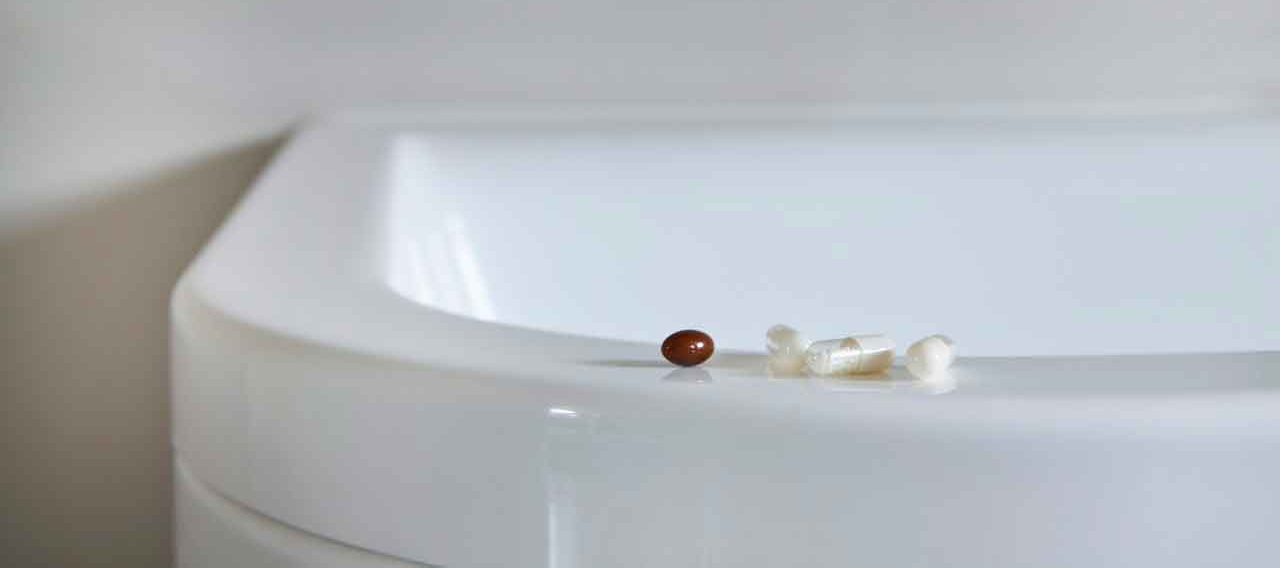The Right Ways to Dispose of Unused Medicine

Flushing pills down the toilet seems logical but isn’t the answer.
It’s estimated that nearly 4 billion drug prescriptions are filled in the United States every year, with a third of those going unused, according to a drug disposal advocacy organization.
That translates to as much as 200 million pounds of pharmaceuticals that could impact the environment if disposed of improperly.
RELATED TOPIC: The Straight Dope on Pricey Prescription Drugs
It used to be that you just flushed unused or expired meds down the toilet, which seemed like a prudent thing to do.
But studies have found that waterways, especially streams, have been contaminated by pharmaceuticals. More than 130 streams were sampled across the U.S., and more than 80 percent tested positive for drugs. It’s likely that at least one of those streams were in your area.
Other studies have found that you may have pharmaceutical drugs in your drinking water supply. About 40 million Americans do.
Right now is a great time to take stock of your medicines and see how many have gone unused or are expired.
Prescription bottles will sometimes be explicitly labeled to tell you when a medicine should be discarded. On over-the-counter medicines, the expiration date is printed with ink or stamped into the bottom of a box or bottle.
You still may be flushing or throwing away your unused or expired medications conscientiously to avoid their being used by children or poisoning animals that may search through garbage for food.
Or you may be keeping unused or expired medications in your medicine cabinet thinking they’re in a safe location. The problem with that: many kids, mostly teenagers, have turned your medicine cabinet into a drug dispensary.
The Institute for Safe Medicine Practices (ISMP) maintains a website that offers you advice on the proper disposal of medicines to avoid drug abuse and environmental contamination.
The first step is easy. Don’t flush medicines down the toilet. However, “while the rule of thumb is not to flush, the federal Food and Drug Administration has determined that certain medications should be flushed due to their abuse potential,” says the ISMP.
When throwing medicines away, you should crush solids into powder or dissolve them in water. Dilution applies to liquid medicines as well.
You should also mix solids with kitty litter or sawdust, or any substance that can absorb dissolved medication, to make them even less palatable for kids and animals. Then seal them in a plastic bag before disposing of them in the trash.
You should remove and destroy all personal information from a container (prescription bottle) and look for approved state and local collection programs or hazardous waste disposal facilities.
In some states, you can take unused medicines to your local pharmacy for proper disposal.
Finally, talk to your pharmacist. Studies have found that pharmacists are among the most knowledgeable and accessible healthcare professionals. As medication experts, they can give you good advice on how to dispose of unused medicine.
In recent years the federal government has sponsored a Prescription Drug Take-Back Day organized by the federal Drug Enforcement Agency. Police officers and community groups collect and dispose of unneeded and expired prescription drugs for you.
The strange thing is, less than 10 percent of pharmaceutical environmental contamination is from improper disposal of drugs, according to Peter J. Pitts, president of the Center for Medicine in the Public Interest.
A huge majority of drug contamination is from what is excreted by people into sewer systems. While take-back programs or other ways to dispose of drugs properly can address that, you can help make a dent in the environmental challenge on you own.
Updated:
November 24, 2015
Reviewed By:
Christopher Nystuen, MD, MBA